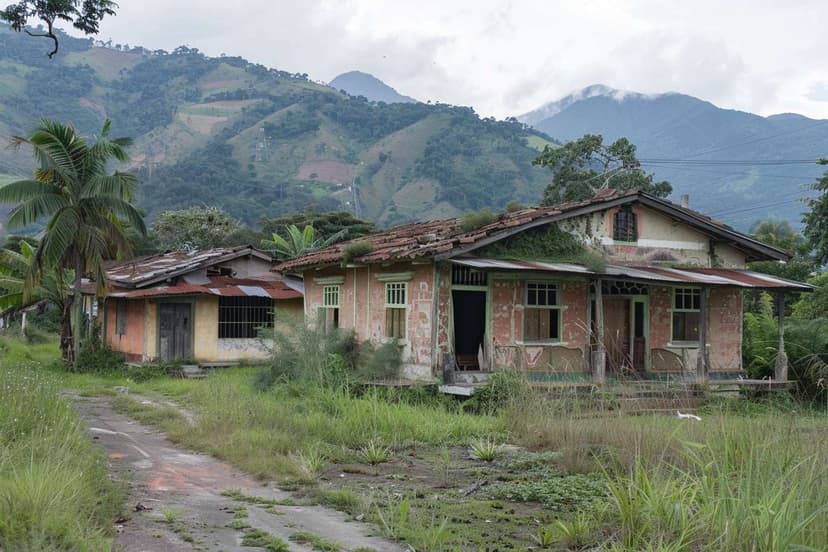Exploring the Unique Real Estate Market of Abandoned and Distressed Properties
Grace Harris • November 3, 2024 • 3 min
In the ever-evolving real estate landscape of the United States, a unique niche is garnering attention: abandoned and distressed homes. Often available at a fraction of traditional listing costs, these properties present both challenges and opportunities for investors and homeowners alike. This trend reflects a growing interest in renovation projects and creative investing.

Understanding the Market Dynamics of Abandoned and Distressed Properties
The market for abandoned and distressed properties is driven by factors such as economic conditions, shifting demographics, and urban development trends. These properties often result from economic downturns, leading to foreclosures and vacancies when homeowners cannot meet mortgage obligations. This creates a supply of properties available at reduced prices, sometimes selling for as little as $1 in distressed areas.
Investors are increasingly turning to these properties to capitalize on lower entry costs and potentially high returns post-renovation. The process typically involves purchasing properties in cash, which can expedite transactions and make offers more attractive to sellers. However, the market is not without its challenges, such as legal issues related to property titles, zoning restrictions, and the substantial time and financial investment required for renovations.
The Appeal of Buying Houses for Cash
The concept of buying houses for cash is gaining traction among investors and homebuyers looking to streamline the purchasing process. Cash transactions eliminate the need for mortgage approval, reducing the time it takes to close a deal. This is particularly advantageous in the competitive market of abandoned and distressed properties, where fast action is often necessary to secure desirable deals.
Moreover, cash offers can be more appealing to sellers, particularly banks or other institutions looking to offload foreclosed properties quickly. This can lead to better negotiation terms and potentially lower purchase prices. For buyers, the absence of mortgage payments can also translate into greater financial flexibility, allowing them to allocate more resources towards necessary renovations.
Renovation Projects: Risks and Rewards
Renovating abandoned and distressed properties can be both rewarding and challenging. On the one hand, these projects offer the opportunity to significantly increase a property's value through strategic improvements and modernizations. Investors can tailor renovations to meet market demands, potentially securing high rental incomes or profitable resale values.
However, renovation projects also come with inherent risks. It's crucial to conduct thorough inspections to identify structural issues, mold, or other hidden problems that could escalate costs. Additionally, navigating local building codes and securing necessary permits can be time-consuming and complex. Successful investors often emphasize the importance of having a detailed renovation plan, a realistic budget, and a reliable team of contractors.
Navigating Legal and Financial Considerations
When dealing with abandoned and distressed properties, understanding the legal and financial landscape is paramount. These properties can be entangled in legal complexities, such as unclear titles, liens, or disputes with previous owners. It's advisable to engage with real estate attorneys or professionals who specialize in distressed properties to ensure a smooth transaction.
Financing renovations also requires careful planning. While some investors may have sufficient capital to cover costs, others might explore private loans or partnerships. It's vital to assess the financial viability of a project before committing, considering potential resale values and the local real estate market's stability.

Conclusion: The Path to Successful Investing in Abandoned and Distressed Properties
Investing in abandoned and distressed properties presents a unique set of challenges and opportunities. With the potential for significant financial gains, this market attracts a diverse range of investors and homebuyers willing to take on the risks associated with renovation projects. Success in this niche requires a strategic approach, encompassing cash purchases, thorough property evaluations, and a comprehensive understanding of legal and financial considerations.
As interest in fixer-upper properties and creative real estate investing grows, so does the potential for transforming once-overlooked properties into valuable community assets. For those willing to navigate the complexities, the rewards of investing in abandoned and distressed properties can be substantial, offering both financial returns and the satisfaction of revitalizing neighborhoods.
Disclaimer: The information provided in this article is for informational purposes only and should not be considered as financial or legal advice. Prices are accurate as of the publish date and may vary over time.